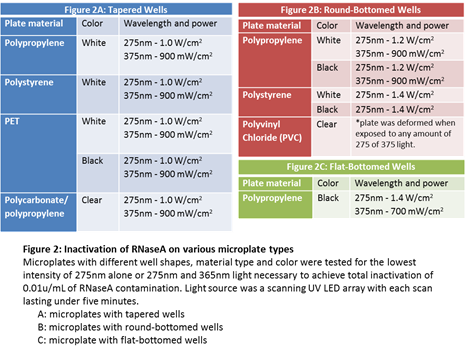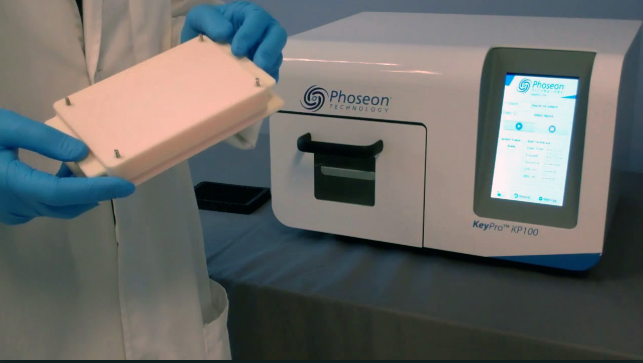Working from previous knowledge that 275nm and 365nm sources work synergistically to speed RNase A inactivation, we used these wavelengths on Greiner Bio-One flat-bottomed black opaque microplates. Sample wells were first treated with 0.01u/mL of RNase A. We then used 1.4 W/cm ² of 275nm light and 700 mW/cm ² of 365nm light on a scanning array to decontaminate the doped wells. Once efficacy was confirmed on Greiner plates, we began testing microplates of other materials, colors, and well shapes.
Each plate was first melt-tested to determine the intensity of UV light it could withstand. Some plate materials proved to be incompatible with the high-intensity UV at RNase inactivation wavelengths. We then determined the minimum intensity of light necessary to successfully inactivate RNaseA in each plate type.
With a high-intensity, scanning UV LED array we effectively decontaminated the most common microplate types in less than five minutes. This protocol does not leave any residue as chemicals and sprays often do. Furthermore, by implementing this protocol prior to every run, the integrity of your RNA library or sequence is secure.



